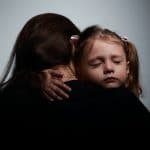
Fever and Your Baby or Child
A fever is just the name given to a higher than normal temperature. Your child’s normal temperature will vary throughout the day and is higher when they are active. However, the normal temperature for your child is around 37 degrees centigrade and a fever is defined as above 38 degrees.
Fever: A Sign or Symptom of Sickness
By itself, fever is not an illness it is a sign or symptom and shows that the body is fighting infection caused by a virus or bacteria. Fever (a high temperature) stimulates certain defenses, such as the white blood cells, which attack and destroy invading bacteria. Also germs like a steady body temperature and your body varies this in it’s efforts to get well.
Fever most commonly accompanies respiratory illnesses such as:
- Croup
- Pneumonia
- Ear nose or throat infections
- Colds
- Influenza
It also may occur with infections of the bowel, blood, or urinary tract, inflammation of brain and spinal cord (meningitis), and with a wide variety of viral illnesses.
Use a Thermometer
Although it is sometimes helpful to feel your child’s forehead and compare this to your own temperature the best way to test for fever is with a thermometer. Put the thermometer under their tongue or their armpit and ask them to clamp it there. You should leave the thermometer in place for at least 3 minutes to get an accurate reading and remember to disinfect it well before and after use to prevent the spread of germs.
Don’t Confuse Fever with Heatstroke
Heatstroke is a rare but serious problem that is easily confused with fever. Unlike fever the condition is not caused internally by infection but by the surrounding temperature. Simply put the child gets too hot because it is too hot where they are. It occurs when a child spends too long in a very hot place, like in the sun on a beach or a very hot room. Sadly a common cause is leaving children unattended in closed cars and this has caused several deaths. Don’t leave your child unattended in the car, even if just for a few minutes!
Febrile Convulsions
Febrile convulsions usually only happen in children between six months and five years, the convulsions tend to run in families so be aware of your own and your partners health history. If neither of the parents have suffered these they are less likely in your children. Your child may look vacant or strange for a few moments, then stiffen, twitch, and roll their eyes. They will be unresponsive for a short time, and their skin may appear to be a little darker than usual during the episode. The entire convulsion usually lasts less than a minute, and may be over in a few seconds, but it can seem like a lifetime to a frightened parent. Although uncommon, convulsions can last for up to fifteen minutes or longer. It is reassuring to know that febrile convulsions almost always are harmless—they do not cause brain damage, nervous system problems, paralysis, intellectual disabilities, or death—although they should be reported promptly to your pediatrician. If your child is having trouble breathing or the convulsion (also referred to as a seizure) does not stop within fifteen minutes, call your doctor
If your child suffers with febrile convulsions and are younger than one year at the time of their first simple febrile convulsion they have around a 50 percent chance of having another one at some point. However the convulsions are unlikely to cause any other health problems. The convulsions can look similar to epilepsy and many parents worry that a febrile convulsion will lead to epilepsy. However epileptic seizures are not caused by a fever, and although statistics seem to suggest there is a slightly higher risk of children with this condition going on to have epilepsy, the risk is very low, and you should not worry.
How to care for your feverish child
To help keep your child comfortable, you should:
- encourage them to drink plenty of fluids – offer regular breastfeeds if you’re breastfeeding
- only offer them food if they seem to want it
- look out for signs of dehydration – these can include a dry mouth, no tears, sunken eyes and, in babies, fewer wet nappies
- check on your child from time to time during the night
- keep them away from childcare, nursery or school – let the carer, nursery or school know your child is unwell
- There’s no need to undress your child or sponge them down with tepid water. Research shows that neither actually helps reduce fever.
- Avoid bundling them up in too many clothes or bedclothes.
Always get medical advice if:
- your baby is under three months old and they have a temperature of 38C (101F) or higher
- your baby is three to six months old and has a temperature of 39C (102F) or higher
- you think your child may be dehydrated
- your child develops a red rash that doesn’t fade when a glass is rolled over it
- your child has a fit (convulsion)
- they are crying constantly and you can’t console or distract them, or the cry doesn’t sound like their normal cry
- has a high-pitched or unusual sound when crying
- the fever lasts for more than five days
- your child’s health is getting worse
you have any concerns about looking after your child at home







